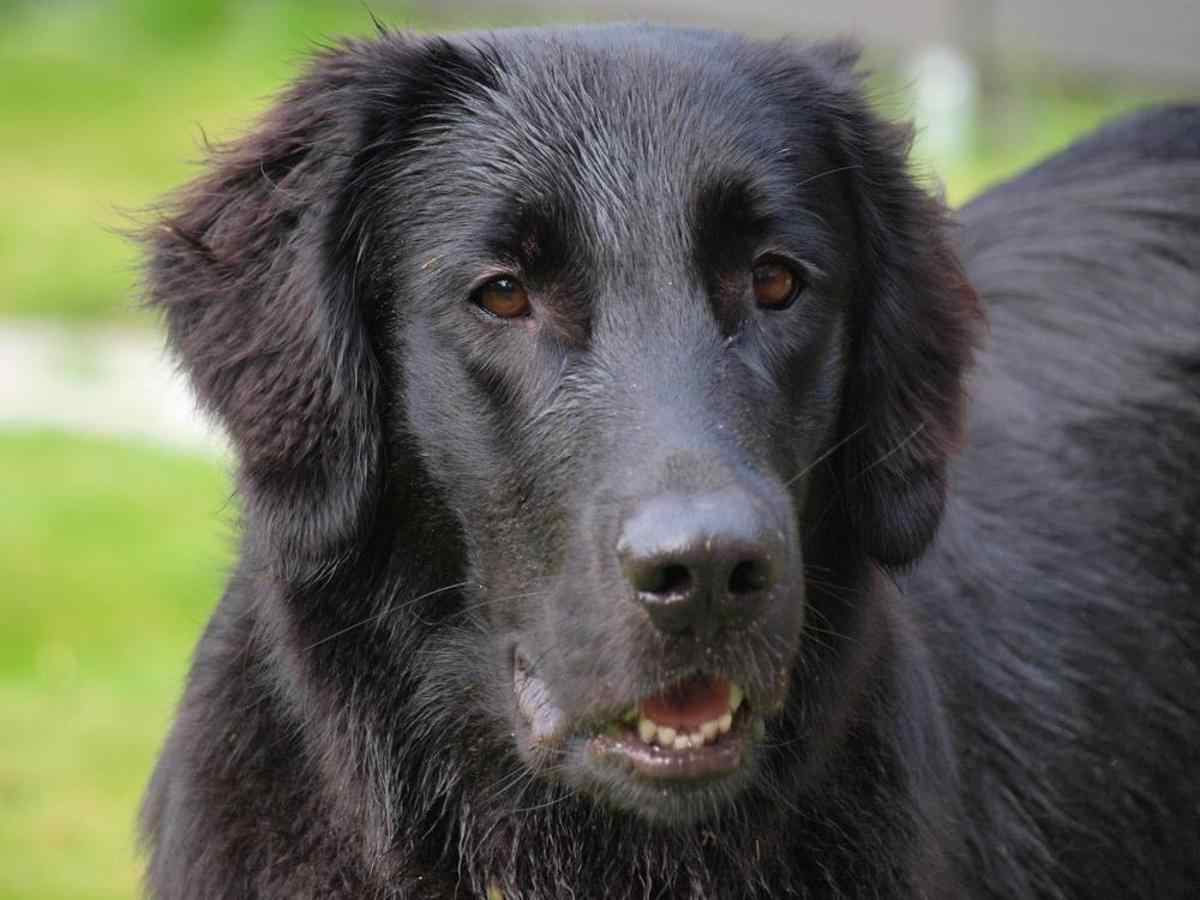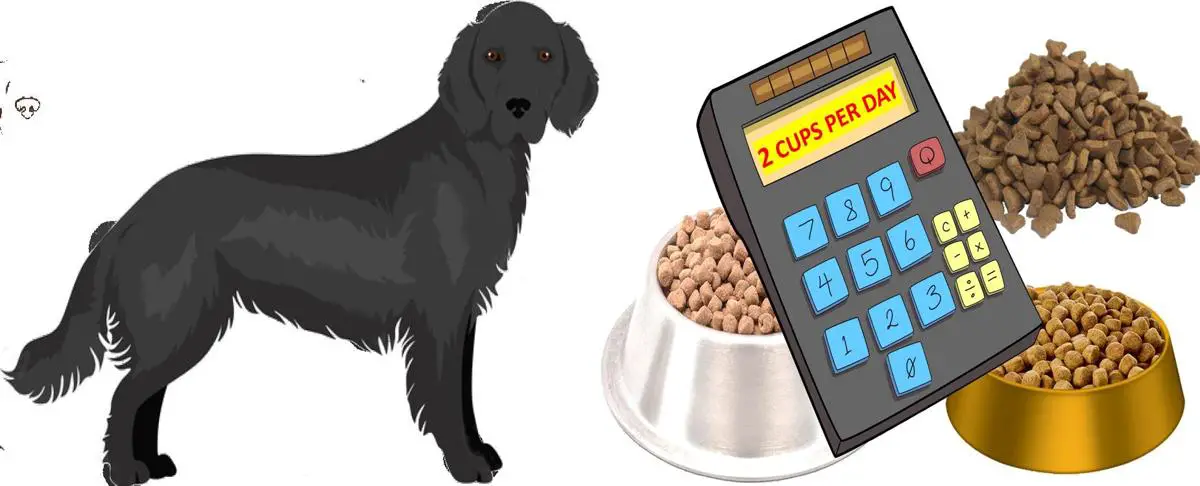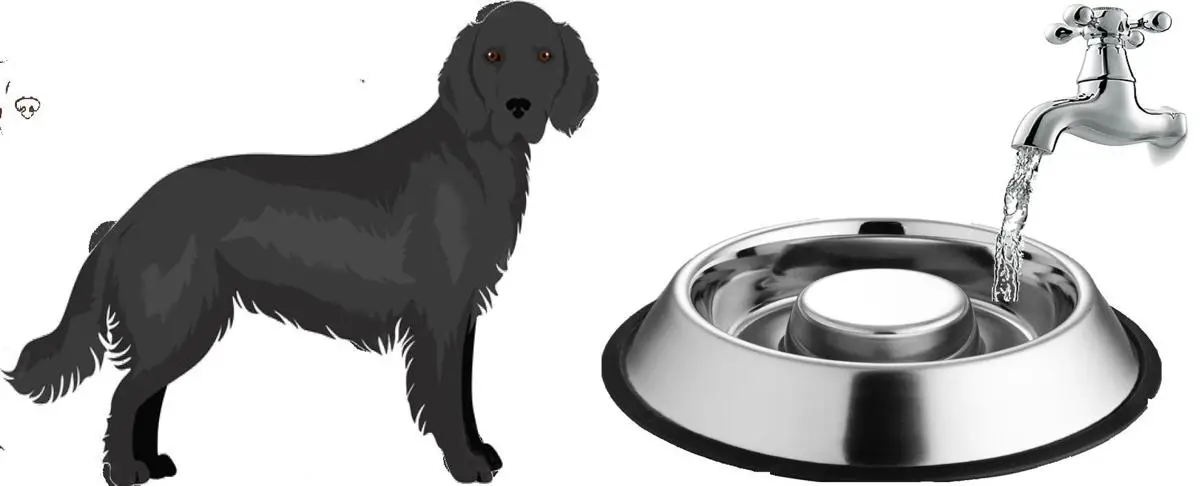Quick Links: Table of Contents
- Flat-Coated Retriever Breed Overview
- History of the Flat-Coated Retriever Breed. Where Flat-Coated Retrievers came from
- What the Flat-Coated Retriever Looks Like
- How Much is the Flat-Coated Retriever Puppy?
- Best Flat-Coated Retriever Breeders
- Adopting or Rescuing the Flat-Coated Retriever
- Flat-Coated Retriever Growth
- The Temperament of the Flat-Coated Retriever
- Flat-Coated Retriever Litter Size
- How Fast Flat-Coated Retrievers Can Run
- Good Names for Flat-Coated Retrievers
- How Intelligent are Flat-Coated Retrievers?
- How Popular are Flat-Coated Retrievers with New Dog Owners?
- Health Problems in Flat-Coated Retrievers and How to Prevent Them
- How to Take Care of Flat-Coated Retriever
- Dog Breeds That Are Similar to Flat-Coated Retrievers
- Other Things to Know About Flat-Coated Retrievers
Flat-Coated Retriever Breed Overview
The Flat-Coated Retriever is a medium-sized dog.
The adult Flat-Coated Retriever stands 1 foot, 10 inches to 2 feet tall at the shoulder.
The Flat-Coated Retriever belongs to the Sporting Dogs group.
Dogs in the Sporting Dogs group, like the Flat-Coated Retriever, were bred to help hunters catch and retrieve feathered game. Some sporting dog breeds such as Retrievers, which were built for swimming, were bred to hunt waterfowl in water.
Whereas sporting dog breeds like setters, spaniels, and pointing breeds were bred to hunt quail, pheasant, and other game birds nest on grasslands.
Many Sporting Group breeds have thick, water-repellent coats that protect them from harsh hunting conditions.
The fact that the Flat-Coated Retriever belongs to the Sporting Dogs group is one of the reasons why Flat-Coated Retrievers have the personality and temperament that they have.
The temperament of the Flat-Coated Retriever is generally described as:
- Confident
- Devoted
- Friendly
- Optimistic
- Outgoing
History of the Flat-Coated Retriever Breed. Where Flat-Coated Retrievers came from
Flat-Coated Retrievers are derived from Newfoundland and Black Retriever breeds.
They were developed to be water retrievers and gundog retrievers.
The Flat-Coated Retriever`s ancestors were thought to have been too curly-haired.
Dogs were crossed with Newfoundlands and other Setter breeds to create a flat-coated retriever.
Hunters needed a dog that could retrieve their quarry on land and water as firearms got more sophisticated.
From the 1800s to the end of World War I, the Flat-Coated Retriever was a popular gundog in England and the United States.
The popularity of the Flat-Coat was lost to its close cousin, the Golden Retriever, shortly after World War I.
The American Kennel Club accepted the Flat-Coat in 1915 despite its declining popularity.
The Flat-Coated Retriever`s numbers plummeted to the point that the breed was at risk of extinction by the middle 1960s.
In the 1960s, breeding programs were resumed to save the Flat-Coat and reintroduce it as a great family dog.
The popularity of the Flat-Coat in the 1800s was not fully restored.
The Flat-Coat is a rare breed, and breeders are very selective in choosing who they adopt.
The Flat-Coated Retriever is a highly affectionate and sensitive dog.
He can also be very playful and will keep his puppy mentality intact well into adulthood.
The Flat-Coated Retriever is so puppy-like that as an adult dog, he is known as the “Peter Pan of Dogs”.
Breeders want to ensure potential Flat-Coat owners have a sense of humor and a love for silly dogs.
.
What the Flat-Coated Retriever Looks Like
Flat-Coated Retrievers are large dogs with long heads.
The eyes of this breed are dark and almond-shaped.
Flat-Coat ears are small and set close to the head.
They don`t have too much feathering.
The Flat-Coat has a long muzzle and dark, matched nose.
Flat-Coat`s jaws are long enough to allow for larger game retrieval, such as hare or pheasant, and his bite can either be scissor- or level.
The Flat-Coated Retriever has a flat coat and a moderately long length.
His coat is either black or dark liver and protects him from all kinds of weather.
The Flat-Coat has feathering on his ears and legs.
However, it is not too long.
The tail is straight, carried in motion with ease and never curled.
Flat-Coat`s forelegs are straight and more bulky than bulky.
The elbows are close to the body.
His feet are well-arched and oval-shaped.
The hindquarters balance with the forelegs, are angled with muscular legs and end in the same feet as the foreleg.
.
How Much is the Flat-Coated Retriever Puppy?
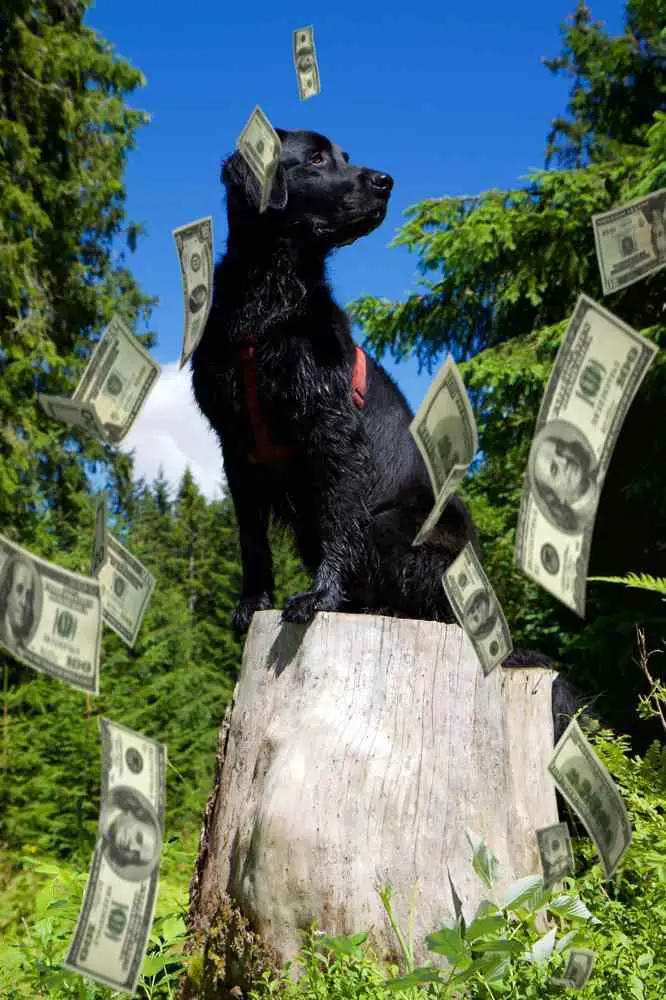
The average price of a Flat-Coated Retriever puppy is $100. The price of a Flat-Coated Retriever puppy ranges from $100 to $100.
A lot of factors determine the price of the Flat-Coated Retriever. These factors include what health records the Flat-Coated Retriever puppy has, the lineage of the Flat-Coated Retriever puppy, the US state the breeder is located in, etc.
To estimate how much you can expect to pay for a puppy Flat-Coated Retriever based on the many factors that determine the price of the Flat-Coated Retriever puppy, check out our calculator that lets you estimate how much you should expect to pay for the Flat-Coated Retriever puppy based on what you want in the puppy.
When looking to buy a puppy, look at buying a puppy only from well-established breeders that breed puppies primarily for the love of the Flat-Coated Retriever breed, and secondarily for profit. Do not buy a puppy from a puppy mill. Puppy mills mass-produce puppies in bad living conditions for maximum profit.
You may also consider adopting instead of buying a puppy. Adoption costs are very low compared to the price of a puppy.
Best Flat-Coated Retriever Breeders
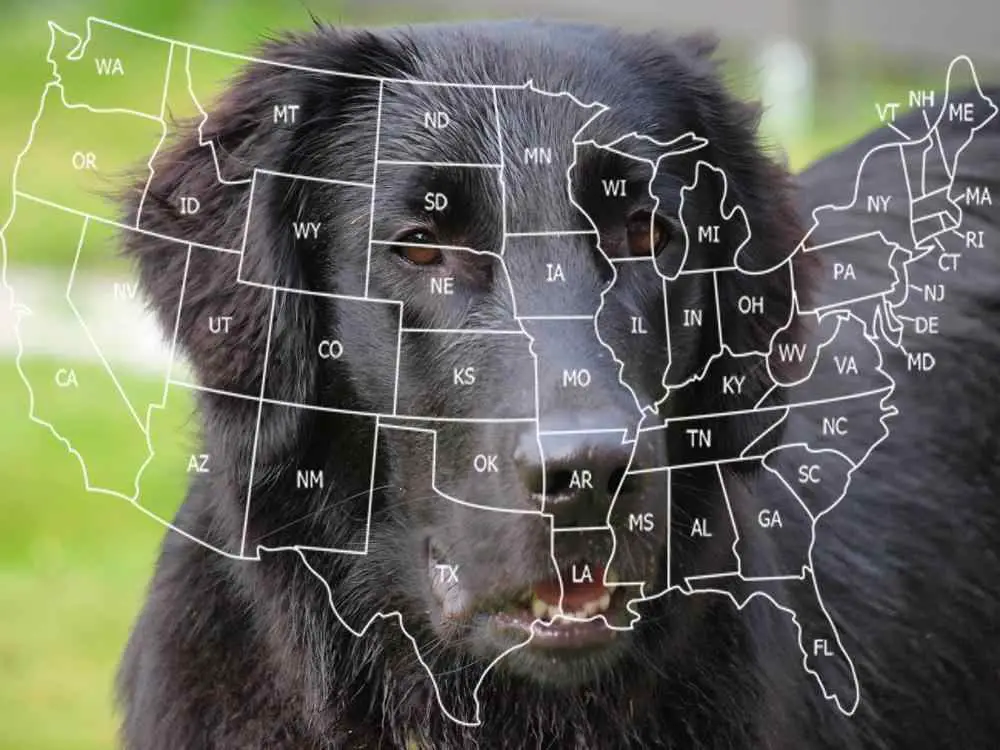
We have researched reputable Flat-Coated Retriever breeders that you can buy a puppy.
Go to this page for our complete list of reputable Flat-Coated Retriever breeders in various states in the United States.
On this page, you will see how much these breeders sell their puppies for, and how many puppies they have available.
A few of these breeders are listed below.
Rensai Kennels
Puppy Price: $3,000.00
Blacmoor Kennels
Puppy Price: $3,000.00
Eden Retrievers
Puppy Price: $3000
Heirborn Flat- Coated Retrievers
Puppy Price: Check with breeder
Applegarth
Puppy Price: Check with breeder
Adopting or Rescuing the Flat-Coated Retriever
You may consider adopting a dog instead of buying a puppy. Many dogs, Flat-Coated Retrievers included, are currently available for adoption in your local dog shelters.
These helpless but adorable dogs are waiting in dog shelters hoping that someday someone will rescue them. Dog adoption costs are lesser than the cost of a new puppy. Dog adoption costs are usually around $300 or even less.
In addition to your local dog shelter, another good place to find dogs that are available for adoption is petfinder.com.
Below is an adorable Male Flat-Coated Retriever named Jj that is currently available for adoption on Petfinder.com. You can find other lovely Flat-Coated Retrievers like Jj on pefinder.com.
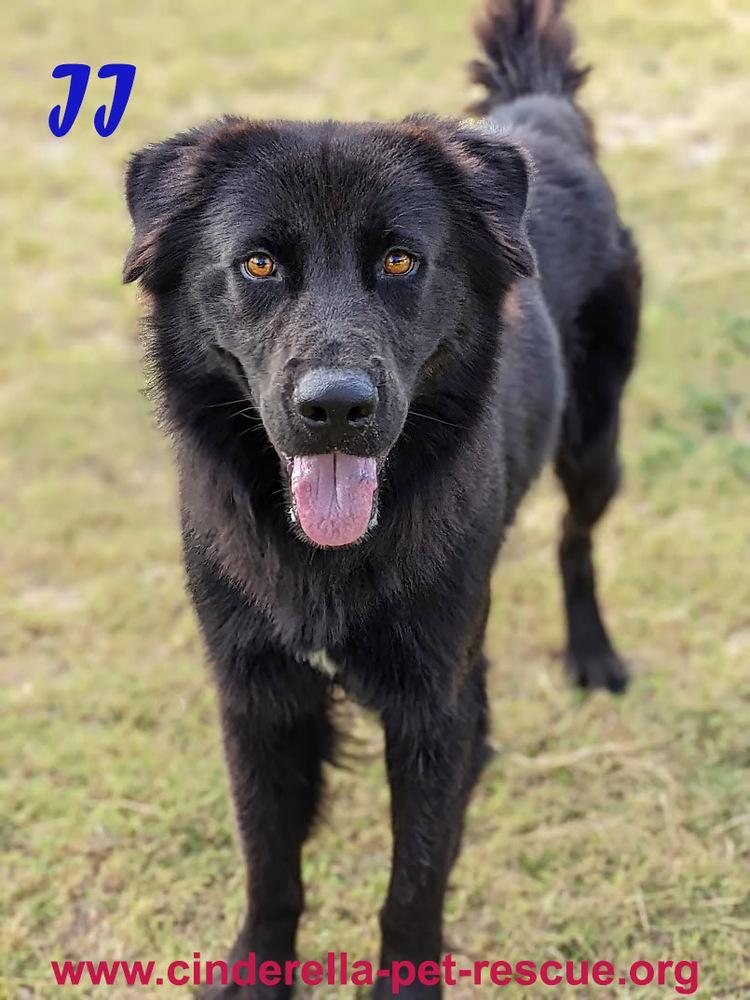
You can find more Flat-Coated Retrievers that are available for adoption on petfinder.
Flat-Coated Retriever Growth
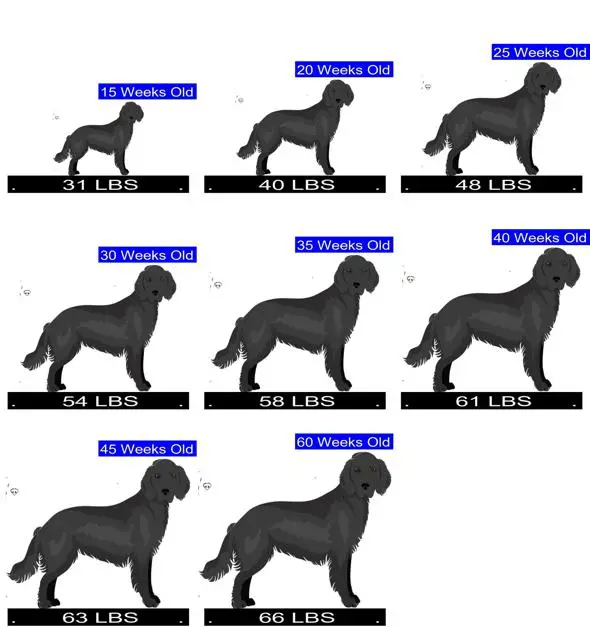
New Flat-Coated Retriever owners need to know about the growth of their Flat-Coated Retrievers. This will help them plan their living spaces accordingly.
Also, knowing the typical growth pattern of the Flat-Coated Retriever will help new owners catch the abnormal growth of their Flat-Coated Retriever early.
See our calculator for predicting how big your Flat-Coated Retriever puppy will get. You will also learn about the typical weight of the Flat-Coated Retriever at different ages and how to catch abnormal growth in your Flat-Coated Retriever

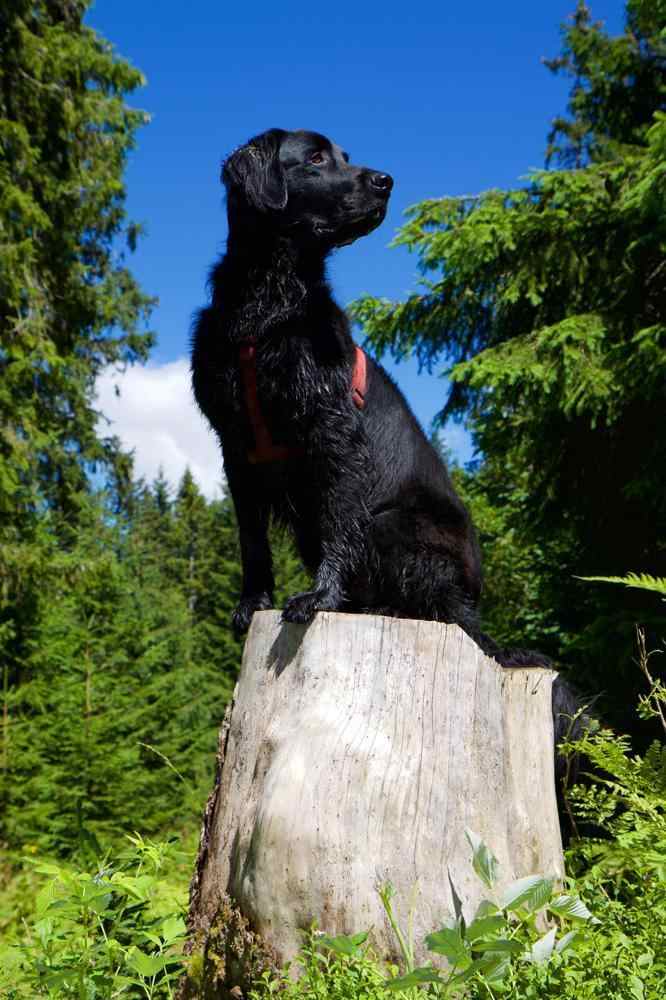
The Temperament of the Flat-Coated Retriever
The temperament of the Flat-Coated Retriever based can be summarized as in the table below.
The table shows the scores of the Flat-Coated Retriever for 13 important dog behavioral factors.
We obtained these scores by analyzing raw data from the C-BARQ dog personality survey tool. The higher the score of a dog for a factor, the worse the temperament of the dog regarding that factor.
The C-BARQ tool was developed by researchers from the University of Pennsylvania, and it is a scientific tool that is used worldwide for reliably measuring the temperament of dog breeds.
See our complete analysis of the temperament of the Flat-Coated Retriever here.
| Factor | Score |
|---|---|
| Stranger Directed Fear | 9.5 percent |
| Energy Level | 73.2 percent |
| Attachment Attention Seeking | 63.2 percent |
| Excitability | 46.7 percent |
| Prey Drive | 46.2 percent |
| Dog Directed Fear | 43.3 percent |
| Dog Directed Aggression | 43.0 percent |
| Dog Rivalry | 29.1 percent |
| Nonsocial Fear | 26.0 percent |
| Touch Sensitivity | 23.8 percent |
| Stubbornness | 15.4 percent |
| Separation Related Behavior | 15.0 percent |
| Owner Directed Aggression | 13.1 percent |
| Stranger Directed Aggression | 11.1 percent |
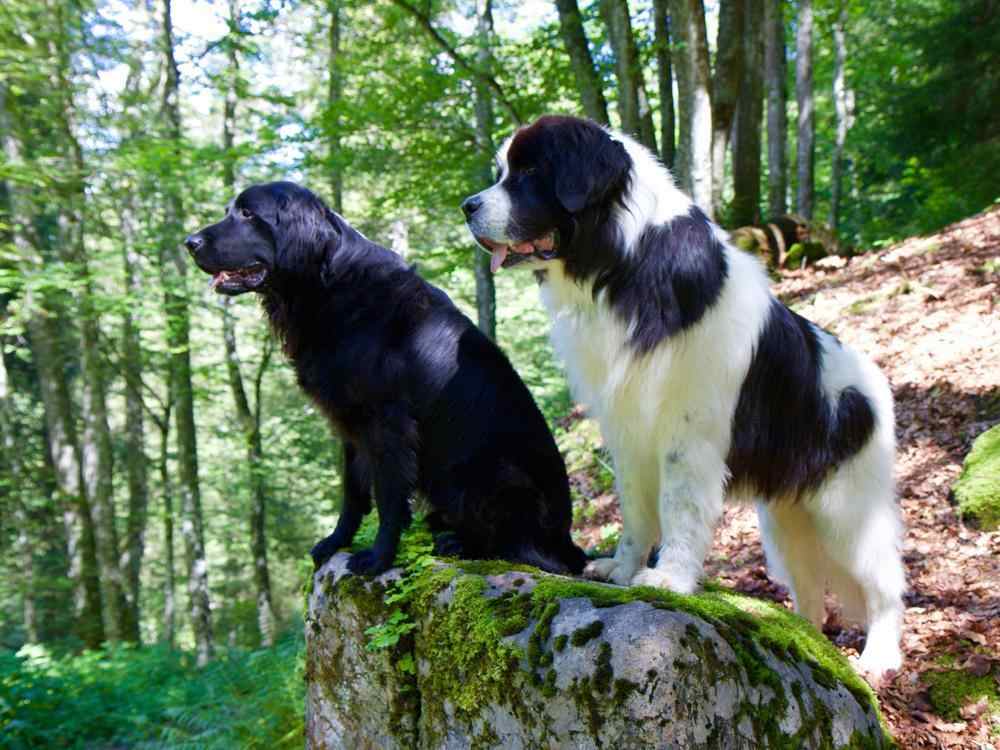
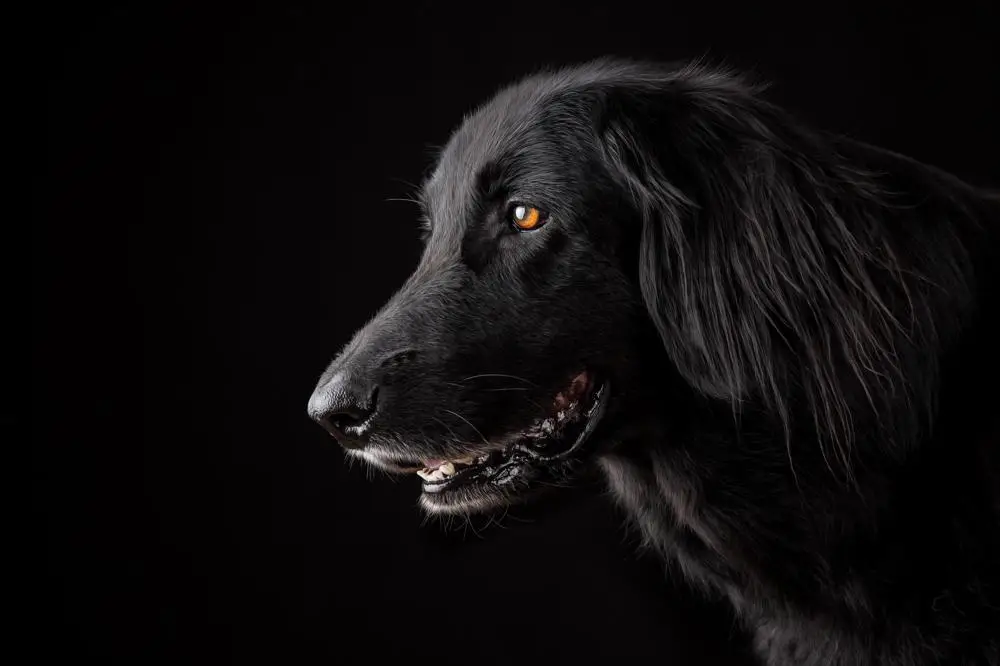
Flat-Coated Retriever Litter Size
Researchers from the Norwegian School of Veterinary Science did a study where they counted the numbers of puppies in 120 different Flat-Coated Retriever birth litters.
From this study, the researchers found that the average number of puppies that Flat-Coated Retrievers can have is 8 puppies. Also, the Flat-Coated Retriever can have as few as 1 puppies per litter and as many as 15 puppies per litter.
The number of puppies that the Flat-Coated Retriever will have depends on factors such as the age of the Flat-Coated Retriever, the method of pregnancy, etc.
Click here to see our calculator for predicting how many puppies your Flat-Coated Retriever will have and how the litter size of the Flat-Coated Retriever compares to the litter size of other dog breeds.
How Fast Flat-Coated Retrievers Can Run
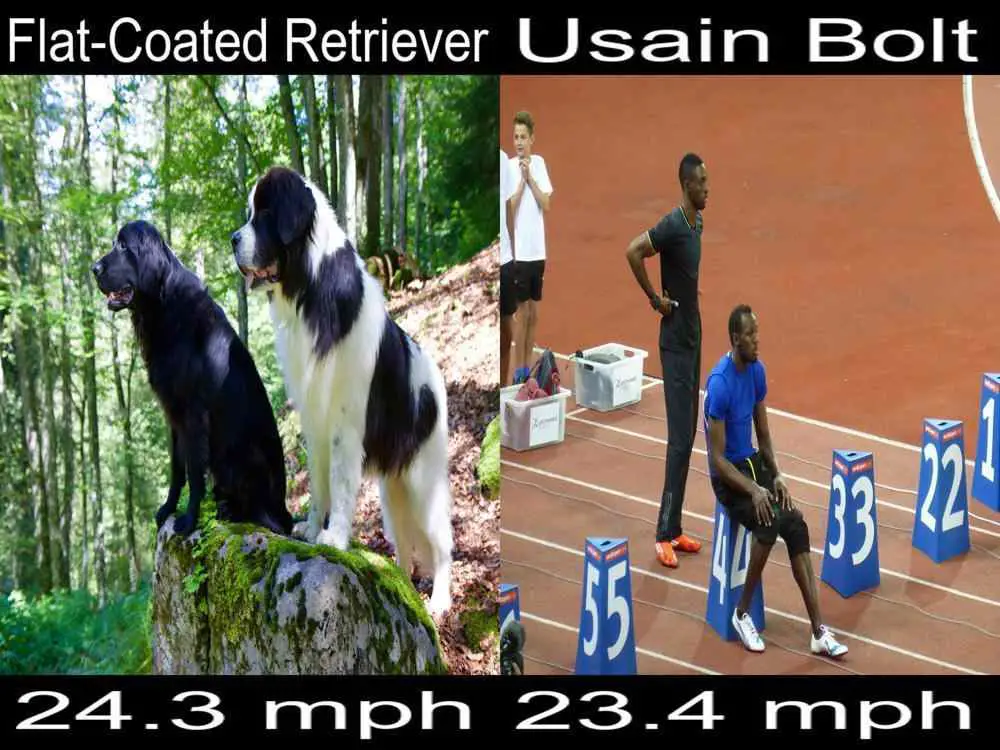
How fast a dog breed can run is a good measure of how athletic the dog breed is.
The American Kennel Club (AKC) regularly conducts dog running competitions. The AKC records the running speed of competing dogs in these competitions. These competitions are open to all dog breeds.
Based on our analysis of the speeds of 113 different Flat-Coated Retrievers, the average speed of the Flat-Coated Retriever is 24.3 mph (39.2 kmph).
The fastest speed on AKC record that the Flat-Coated Retriever ran in a race is 28.42 mph (45.7 kmph) and the minimum speed on record in a race for a Flat-Coated Retriever is 15.16 mph (24.4 kmph).
Click here to see how the speed of the Flat-Coated Retriever compares to the speed of other dogs and other mammals such as cats, horses, humans, etc.

Good Names for Flat-Coated Retrievers
Here are some really good names that are typical for the Flat-Coated Retriever ranked by popularity:
- Dante
- Blackie
- Kaluha
- Dre
- Scout
- Finch
- Jasper
- Miles
- Palisade
- Jj
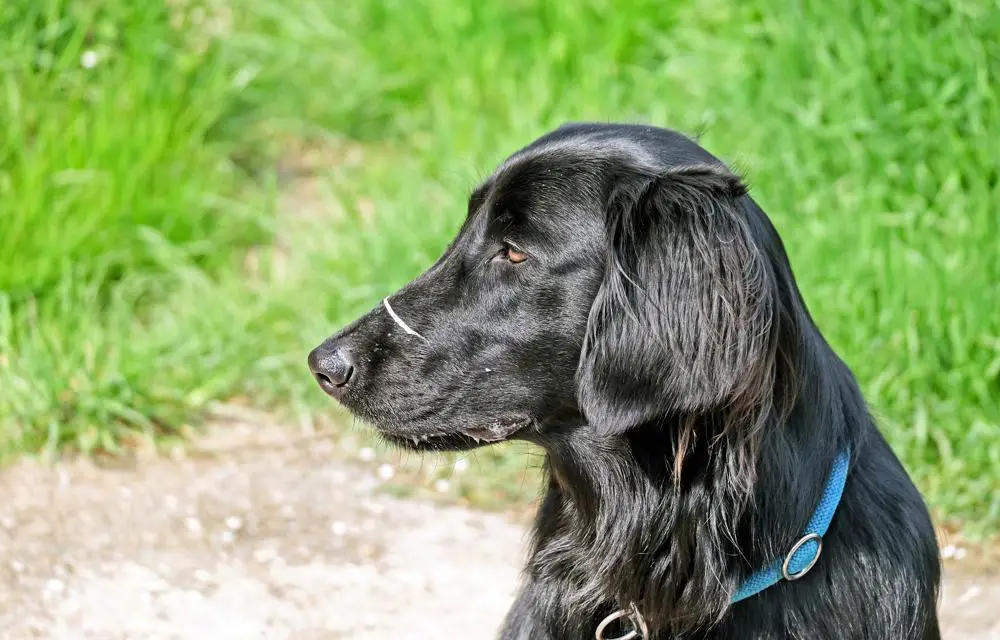
How Intelligent are Flat-Coated Retrievers?
| Flat-Coated Retriever | |
|---|---|
| Intelligence Rank | 18 out of 130 dog breeds |
| Trainability | Tend To Learn New Commands After 5 To 15 Repetitions |
According to Prof. Stanley Coren, a Canadian psychology professor/dog trainer, the total intelligence that a dog demonstrates is the addition of three types of intelligence. These intelligence types are:
- Instinctive Intelligence: This is the natural intelligence that comes from instinct. For example, dog breeds that have been historically bred to be guard dogs will have a high `guarding` intelligence compared to dogs that were not bred for guarding.
- Adaptive Intelligence (learning and problem-solving ability): This indicates what a dog can learn to do for himself or herself. Adaptive intelligence is specific to each dog, and not breed specific. You can improve your dog`s adaptive intelligence by investing time to train your dog.
- Working/Obedience Intelligence: This type of intelligence is breed-specific. Certain dog breeds tend to have higher working/obedience intelligence than some other breeds. This intelligence is the closest to what we might call school-learning ability and it is based upon what the dog can learn to do when instructed by humans. This type of intelligence can be measured for each dog breed and compared to that of other dog breeds.
Professor Stanley Coren measured and ranked the working intelligence of about 130 different dog breeds.
Prof. Coren found that the Flat-Coated Retriever has an obedience intelligence rank of 18 out of 130 dog breeds. Thus, Prof. Coren put Flat-Coated Retrievers in the `Excellent Working Dogs` category.
This means that Flat-Coated Retrievers tend to learn new commands after 5 to 15 repetitions.
However, we should mention that a dog should not be judged based on its intelligence alone. There are other important factors you need to consider when deciding on which dog breed to get. These other factors include sociability, adorability, and compatibility of the dog breed with your lifestyle.
See the intelligence ranking of some other dog breeds below:
| Breed | Intelligence Rank |
|---|---|
| Border Collie | 1 |
| Standard Poodle | 2 |
| Golden Retriever | 4 |
| Doberman Pinscher | 5 |
| English Springer Spaniel | 13 |
| Collie | 16 |
| Belgian Malinois | 22 |
| Pomeranian | 23 |
| Border Terrier | 30 |
| Norwich Terrier | 38 |
| American Water Spaniel | 44 |
| Scottish Deerhound | 47 |
| Boxer | 48 |
| Chinese Crested | 61 |
| Dandie Dinmont Terrier | 62 |
| Lhasa Apso | 68 |
| Bullmastiff | 69 |
| Bloodhound | 74 |
| American Bulldog | 77 |
| Basenji | 78 |
How Popular are Flat-Coated Retrievers with New Dog Owners?
Every year, the American Kennel Club (AKC) publishes information on how popular a dog breed is in that particular year. The AKC gets the popularity information of a breed from how many dogs of that breed the owners register with the AKC every year. The AKC collects this data for about 200 dog breeds.
The graph below shows the popularity trend of the Flat-Coated Retriever.
The popularity of the Flat-Coated Retriever averaged over the years is Number 94 out of about 200 dog breeds.
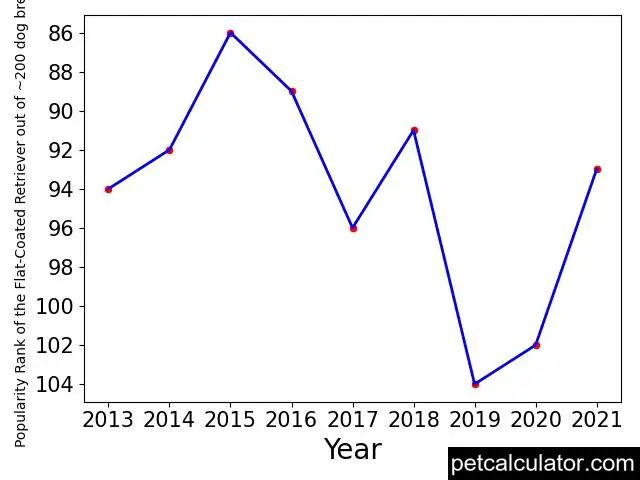
Do not get a dog breed just because it is a popular dog breed. And do not reject a dog breed just because it is an unpopular breed.
Health Problems in Flat-Coated Retrievers and How to Prevent Them
Every dog breed has its own set of health problems that it tends to develop. There is nothing like a perfect dog breed.
The Flat-Coated Retriever is prone to certain genetic health conditions. The Orthopedic Foundation for Animals (OFA) is an organization that keeps track of genetic health problems in dog breeds.
From the extensive records that the OFA keeps, the OFA knows what health problems each dog breed is naturally prone to develop.
Hence, the OFA recommends which health screening breeders should perform on a dog breed to make sure that the breeders won`t breed `defective` dog parents that can pass down defective genes to their puppy offspring.
If you want a Flat-Coated Retriever puppy that will grow up to be healthy, make sure that your Flat-Coated Retriever breeder screens your puppy or your puppy`s parents for the health problems that the OFA recommends for your puppy`s breed. This will increase the chances that your puppy is free from genetic defects.
The following are the health tests that Orthopedic Foundation for Animals (OFA) recommends that breeders should screen Flat-Coated Retrievers for:
You can find out more about OFA`s recommended tests for Flat-Coated Retrievers here.
How to Take Care of Flat-Coated Retriever
To take good care of your Flat-Coated Retriever, you need to make sure that you groom your Flat-Coated Retriever regularly.
Secondly, you need to find a veterinarian in your area that will routinely check the health status of your Flat-Coated Retriever regularly, and give you appropriate recommendations on your Flat-Coated Retriever`s preventative care.
Thirdly, you need to commit some time to exercise your Flat-Coated Retriever daily. Regular exercise helps improve the health and quality of life of your Flat-Coated Retriever.
Also, you need to feed your Flat-Coated Retriever high-quality dog food, and the food should be of the right amount to prevent your Flat-Coated Retriever from getting overweight or underweight.
See our recommendations on what to feed the Flat-Coated Retriever and how much food to feed the Flat-Coated Retriever at different life stages.
Finally, you need to make sure that your Flat-Coated Retriever has access to clean water all the time. See our recommendations on how much water your Flat-Coated Retriever needs to drink at different ages.
Dog Breeds That Are Similar to Flat-Coated Retrievers
If you have not made up your mind on which dog breed to get, you may also want to consider some other dogs similar to the Flat-Coated Retriever.
We crunched the numbers and found that the following dog breeds that have similar behavior and temperament as the Flat-Coated Retriever:
- Field Spaniel (80 percent match with Flat-Coated Retriever). Learn more about the Field Spaniel here.
- Wirehaired Pointing Griffon (81 percent match with Flat-Coated Retriever). Learn more about the Wirehaired Pointing Griffon here.
Other Things to Know About Flat-Coated Retrievers
Here are some of the very important characteristics of the Flat-Coated Retriever that you need to know about the Flat-Coated Retriever breed:
